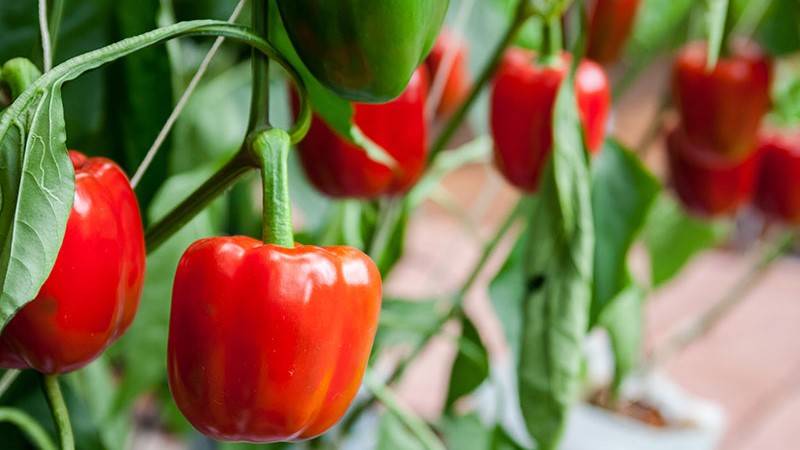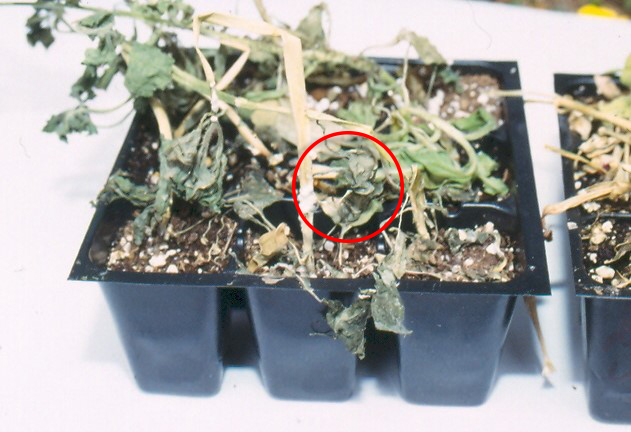Pathogen Profile: Sclerotinia


Sclerotinia sclerotiorum, better known as white mold or cottony mold, is not talked about as a serious greenhouse disease. However, it can cause root rot, stem rot, blighting of foliage and leaf petioles in a wide variety of greenhouse crops, including alyssum, begonia, gazania, geranium, gerbera, gloxinia, larkspur, lobelia, petunia, stocks, vinca and zinnia.
It is more commonly found in field crops such as cabbage, carrot, clover, common bean, celery, cilantro, citrus, cucumber, eggplant, lettuce, various melons, peanut, pepper, potato, soybean, squash and tomato, where high humidity and rain can exacerbate the disease. It is not known to attack grasses.
Terminology
Sclerotinia is often confused with other terms due to their spelling:
- Sclerotinia – fungal plant pathogen known as white mold
- Sclerotia – resting bodies produced by Sclerotinia and Sclerotium
- Sclerotium – fungal plant pathogen that causes Southern blight in tomatoes
Disease Development
Sclerotinia’s disease cycle typically starts from acrospores that are released from fungal bodies called apothecia (which are brown, cup-shaped fruiting bodies, 5-15 mm in diameter). Acrospores can travel for long distances and come in through greenhouse vents or doors. Sclerotinia needs high humidity and / or wet surfaces to thrive. It prefers cooler temperatures of 60-70°F (15-21°C) but can develop at temperatures of 36-90°F (2-32°C).
If an acrospore lands on a flower or damaged tissue and relative humidity is at least 90%, it germinates and enters the plant. Healthy leaves and stems will only become infected if entry points form through damaged tissue or leaf senescence. At the penetration site, light brown lesions typically form. These lesions can either appear as soft water-soaked spots that enlarge, forming a watery soft rot (they can be relatively dry in some plants). If there is ample humidity and moisture, white, cottony mycelium will grow over the infected spot. If the lesion is close to the soil line, the white mycelium might spread onto the growing medium or soil surface.
Black, irregularly shaped sclerotia form within the cottony mass. Sclerotia are black, “seedlike”, resting bodies that form inside the stem or other plant tissue just prior to plant death. They can persist in plant residues for some time and in the soil for 10-15 years. Sclerotia eventually germinate, invade organic matter in soils, and form apothecia from which acropsores are released, beginning the cycle again.

Plant Symptoms
The first visible symptoms of Sclerotinia include light brown lesions that form on stems, leaves or flowers. As mentioned, these spots appear as water-soaked, but in some plant species it appears as a dry rot. As it progresses, plant tissue is quickly destroyed, often with a narrow transition from tan, diseased tissue to normal tissue. If infection occurs in the stem or crown of a plant, a lesion can girdle the stem, causing wilting of the leaves, which can turn yellow and then brown. Eventually, the whole stem dies. If canopies are dense and humidity is high, the disease can quickly spread throughout a single plant and transfer from one plant to another.
Disease Management
Sclerotinia prefers cooler temperatures, but can tolerate a wide temperature range. However, as with most diseases, it prefers high humidity and wet conditions. Below are other non-chemical control methods that can be used to minimize the development or spread of Sclerotinia in the greenhouse or nursery:
- Remove all weeds and plant debris that may harbor Sclerotinia.
- Sanitize the greenhouse after growing season ends.
- Do not reuse growing medium from infected plants.
- Minimize humidity in the greenhouse.
- Maximize airflow by running fans.
- Space plants to minimize humidity in the plant canopy.
- Water in the morning to allow foliage and stems to dry before evening. Avoid getting leaves wet, if possible.
- Minimize plant handling that can damage plants and serve as entry points for Sclerotinia.
There are many chemical products that can be applied to control Sclerotinia, so consult with your distributor or university extension service for more information.
References:
- http://aciar.gov.au/files/node/8613/MN129%20part5.pdf https://www.ces.ncsu.edu/depts/pp/notes/oldnotes/vg4.htm
- Diagnosing and Controlling Sclerotinia Blight (aka-white mold). Joanne Lutz, GGSPro Technical Specialist and Trilby Libhart, GGSPro Technical Support. May 2015.
- White mold (Sclerotinia sp.) showing up in greenhouses http://msue.anr.msu.edu/news/white_mold_sclerotinia_sp_showing_up_in_greenhouses
- Control of Botrytis and Sclerotinia on Ornamentals https://gpnmag.com/article/control-botrytis-and-sclerotinia-ornamentals/
- Sclerotinia Life Cycle and Biology. Dr. Peter Gladders. https://www.fwi.co.uk/academy/lesson/sclerotinia-life-cycle-and-biology